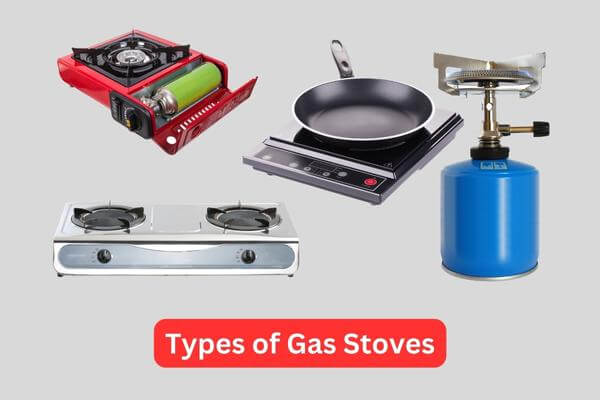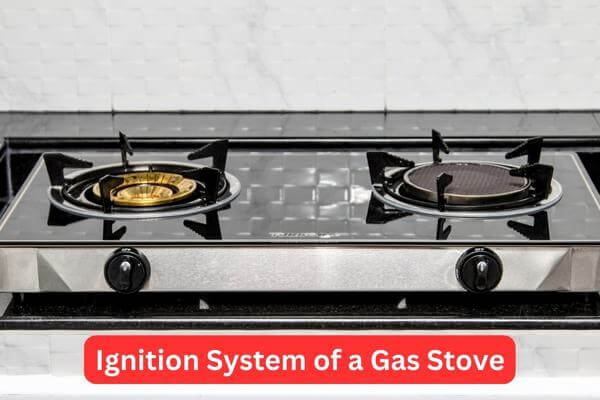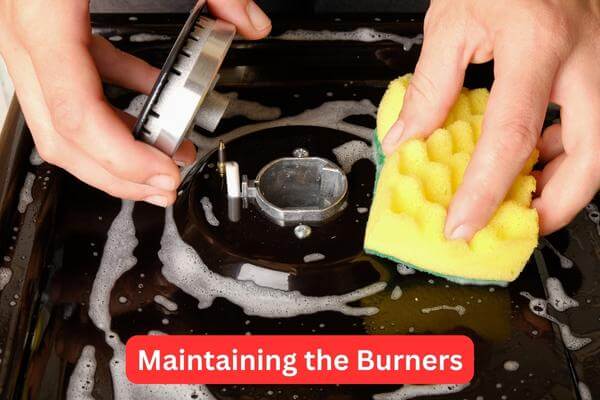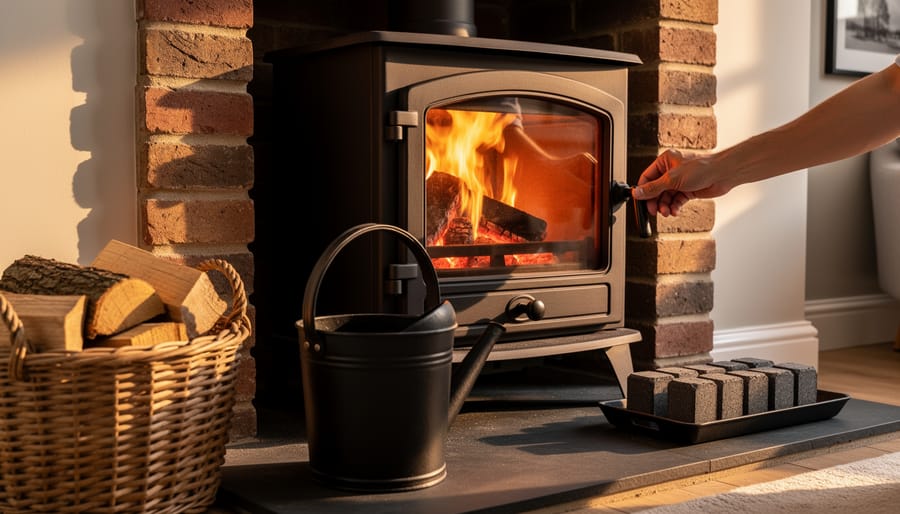A gas stove is a popular cooking appliance powered by gas fuel. It consists of burners that generate heat, which is used for cooking various foods. Gas stoves have been a kitchen staple for decades and remain an essential appliance in modern households.
Gas stoves offer advantages over other types, such as electric and induction stoves. They provide instant heat, which makes them perfect for cooking a wide range of dishes. Additionally, they are more energy-efficient and offer more precise temperature control than other stoves.
The purpose of this article is to provide a comprehensive guide on using a gas stove. We will cover topics such as the different types of gas stoves, how they work, maintenance, cooking techniques, and choosing the right gas stove. Whether you’re a seasoned cook or a beginner, this guide will provide valuable information on how to get the most out of your gas stove.
Types of Gas Stoves

Gas stoves come in different types and designs, each with unique features, advantages, and disadvantages. This section will discuss the most common types of gas stoves.
Freestanding Gas Stoves
Freestanding gas stoves are stand-alone appliances that can be installed anywhere in your kitchen. They have finished sides and can be placed between cabinets or stand-alone.
Advantages
A freestanding gas stove’s primary advantage is that it is easy to install and doesn’t require modification to your kitchen. They offer more versatility in terms of placement and can be moved easily.
Disadvantages
The downside is that they take up more space and are often more expensive than other types of gas stoves.
Slide-in Gas Stoves
Slide-in gas stoves are designed to slide between two cabinets and have a seamless look. They have unfinished sides and are typically installed at the same height as your countertop.
Advantages
The primary advantage of slide-in gas stoves is that they offer a sleek and seamless look that is popular in modern kitchens. They are also easier to clean because there are no gaps between the stove and the countertop.
Disadvantages
The downside is that they are more expensive than freestanding gas stoves and require installation between cabinets.
Downdraft Gas Stoves
Downdraft gas stoves have a ventilation system that pulls smoke and cooking odors down through the stove and out of your kitchen.
Advantages
The primary advantage of downdraft gas stoves is that they eliminate the need for a range hood or overhead vent, which can save space in your kitchen. They are also effective at removing smoke and cooking odors.
Disadvantages
The downside is that they are more expensive than other gas stoves and may not be as effective at venting as a range hood.
Sealed Burner Gas Stoves:
Sealed burner gas stoves have burners sealed to the stovetop, preventing spills and crumbs from falling into the burners.
Advantages
The primary advantage of sealed burner gas stoves is that they are easier to clean and maintain. They also tend to have a more even heat distribution, making them ideal for cooking delicate foods.
Disadvantages
The downside is that they are often more expensive than other gas stoves, and the sealed burners can make cleaning difficult if something gets inside.
How a Gas Stove Works?
A gas stove is a kitchen appliance that uses gas as a fuel to cook food. Understanding how a gas stove works can help users maximize its performance, control heat settings, and ensure safe use.
Components of a Gas Stove
The stove consists of several essential components that work together to create a safe and efficient cooking environment. This section will discuss the various components of a gas stove and its functions.
- Burners: Burners are the heat source of a gas stove. They come in different shapes and sizes, and each burner has its own control knob to adjust the flame.
- Regulator: The regulator controls the gas flow from the gas supply to the burners. It ensures that the gas pressure is consistent, which is necessary for the proper and safe gas stove operation.
- Ignition System: The ignition system is responsible for igniting the gas from the burner. There are two types of ignition systems: standing pilot and electric ignition. A standing pilot is a small flame that remains on all the time to ignite the gas when the burner is turned on. An electric ignition system uses a spark or a hot surface to ignite the gas.
- Safety Valve: The safety valve is a mechanism that shuts off the gas supply to the stove if the flame goes out accidentally. It is a safety feature that prevents gas leaks, which can be hazardous.
Understanding the Flame

Understanding the flame is essential to learning how a gas stove works. Flames come in different types and have distinct characteristics that affect the cooking process. Let us discuss the different types of flames a gas stove produces and the importance of flame control in achieving optimal cooking results.
Types of Flames
The flame on a gas stove can be classified into blue and yellow. A yellow flame indicates incomplete combustion of gas and produces more soot and carbon monoxide, which is harmful to health. A blue flame indicates the complete combustion of gas and produces less soot and carbon monoxide.
Importance of Flame Control
Flame control is essential to using a gas stove, as it allows you to adjust the heat output and cook food perfectly. Understanding flame control is crucial in preventing undercooking or overcooking and helps avoid accidents and potential hazards. Knowing how to adjust the flame and manage the heat output, you can cook a wide range of dishes precisely, making your gas stove a valuable tool in the kitchen.
Ignition System of a Gas Stove

The ignition system is a critical component of a gas stove responsible for producing a spark or flame to light the gas coming out of the burners. It is an essential aspect of the stove as it provides the necessary means to start cooking.
Types of Ignition Systems
There are two types of ignition systems: standing pilot and electric ignition. A standing pilot system requires manual lighting of the pilot flame. An electric ignition system is more convenient as it eliminates the need for manual lighting of the pilot flame. Electric ignition systems can be divided into spark and hot surface ignitions.
Choosing the right ignition system
The choice of ignition system depends on personal preference, convenience, and the type of gas stove. While standing pilot systems are less expensive, they are less energy-efficient and can lead to gas wastage. Electric ignition systems are more energy-efficient and convenient but more expensive.
Safety Features of a Gas Stove
Gas stoves are essential to many kitchens, providing a convenient and efficient way to cook a wide range of meals. However, they also come with inherent safety risks due to using gas as a fuel source. To address these risks, modern gas stoves include a variety of safety features designed to protect users from potential hazards.
Safety Valves
Safety valves are designed to shut off the gas supply to the burners if the flame goes out. They work by detecting the flame’s heat and cutting off the gas supply if it is not present. This prevents a buildup of gas in the kitchen, which could cause an explosion. Safety valves are essential in gas stoves, and you should ensure they are functioning correctly.
Automatic Shut-off
Some gas stoves have an automatic shut-off feature that cuts off the gas supply if the stove is left on for an extended period. This is particularly useful if you forget to turn off the stove after cooking. The automatic shut-off feature ensures that the gas supply is cut off, preventing a potential fire hazard.
Child Locks
Child locks are essential safety features that prevent children from accidentally turning on the stove or changing the settings. A child lock is particularly important if you have young children in your home who are curious and like to explore. It is essential to keep the stove out of reach of children, and a child lock adds an extra layer of safety.
Maintenance of a Gas Stove
Gas stoves require regular maintenance to ensure they function efficiently and safely. This section covers the various aspects of gas stove maintenance, including cleaning the stovetop and burners, replacing faulty parts, and proper use and handling.
Cleaning the Stovetop
Cleaning the stovetop is an essential part of gas stove maintenance. The stovetop should be cleaned regularly to prevent grease and grime buildup, which can interfere with the stove’s functioning. Use a non-abrasive cleaner and a soft cloth or sponge to clean stains and spills. Avoid using abrasive scrubbers or cleaners that can scratch the surface of the stovetop. It is also important to wipe up spills as soon as they happen to prevent them from hardening and becoming more challenging to remove.
To keep the stovetop clean, it is essential to avoid leaving pots and pans on the stove for extended periods, as this can cause scratches and discoloration. Additionally, wiping down the stovetop after each use with a damp cloth or sponge can help prevent the buildup of dirt and grime.
You May Also Like:
Maintaining the Burners

Maintaining the burners is critical for ensuring the gas stove functions correctly. Over time, burners can become clogged with food and grease, reducing heat output and causing uneven flames. To clean the burners, remove the grates and caps, and soak them in warm, soapy water. Scrub away any remaining debris using a soft brush or sponge. It is also essential to avoid using abrasive scrubbers or harsh chemicals that can damage the burners.
To keep the burners clean, avoiding spilling food or liquids onto them and wiping them down after each use is important.
Replacing Faulty Parts
If a part of the gas stove becomes faulty, it may need to be replaced. Identifying faulty parts can be challenging, but common signs include uneven flames, gas leaks, and the stove not turning on. If you suspect a part is faulty, it is best to call a professional to inspect and repair it.
If you need to replace a faulty part, refer to the manufacturer’s instructions to ensure you purchase the correct replacement part. Turning off the gas and unplugging the stove before attempting any repairs is essential.
- Can You Put Gas Stove Grates in Dishwasher?
- How to Season Cast Iron Grates on Gas Stove?
- Can You Paint Gas Stove Grates? A DIY Guide
Proper Use and Handling
Proper use and handling of a gas stove are critical for ensuring it functions safely and efficiently. Tips for safe use include:
- Ensuring the stove is installed correctly and in a well-ventilated area.
- Keeping flammable items away from the stove.
- Turning off the gas and unplugging the stove before cleaning or repairing.
Common mistakes to avoid include:
- Leaving food unattended on the stove.
- Using the stove as a source of heat for the room.
- Using the stove if you smell gas or suspect a gas leak.
If you suspect a gas leak, turn off the gas supply, open windows, and doors, and evacuate the area immediately.
Cooking Techniques on a Gas Stove
Gas stoves are known for their ability to provide precise and even heat control, making them a popular choice for cooks of all skill levels. This section will explore some popular gas stove cooking techniques and tips for successful execution.
Heat Control
Gas stoves offer a wide range of heat settings, from low simmer to high heat. Understanding the different heat settings and how to control them is crucial for successful cooking. Start by familiarizing yourself with your stove’s heat settings and practice adjusting the flame to achieve the desired temperature. This will help you avoid overcooking or burning your food.
Wok Cooking
Wok cooking is a popular technique that requires high heat and quick cooking times. Gas stoves are ideal for wok cooking because they provide the high heat necessary to achieve a crisp texture and smoky flavor. Preheat your wok on high heat for a few minutes before adding your ingredients to get the best results. Use a wok spatula for stir-frying your food quickly and evenly.
Grilling on a Gas Stove
Grilling on a gas stove is a great alternative to outdoor grilling. It’s a convenient way to enjoy grilled food all year round. To grill on a gas stove:
- Use a grill pan or griddle that sits directly on the burners.
- Preheat the grill pan on medium-high heat for a few minutes, then add your food.
- Use tongs to flip your food and achieve grill marks on both sides.
Boiling and Simmering
Boiling and simmering are basic cooking techniques that are used for cooking a variety of foods. Gas stoves are well suited for boiling and simmering because of their precise heat control. To boil water, bring a pot of water to a rolling boil on high heat. To simmer food, reduce the heat to low and maintain a gentle simmer. Covering the pot can help food cook more evenly.
Choosing the Right Gas Stove
When choosing the right gas stove, there are a few factors to consider. These include size, layout, burner configuration, safety features, and brand reputation.
Size and Layout
The first factor to consider is the size and layout of your kitchen. You want to choose a gas stove that fits well in your kitchen and complements the other appliances. It’s also important to consider the size of your family and your cooking needs. If you cook for a large family or entertain often, you may want a larger stove with more burners.
Burner Configuration
The burner configuration is another important factor to consider when choosing a gas stove. Burner configurations can vary, with some stoves having four burners and others having six or eight. You may also want to consider a stove with a high-BTU burner for faster heating.
Safety Features
Safety is always a top priority for appliances, and gas stoves are no exception. Look for stoves with safety features like automatic shut-off and child locks. You may also want to consider stoves with sealed burners to prevent spills from reaching the flame and causing a fire.
Brand Reputation
Finally, choosing a gas stove from a reputable brand with a history of producing high-quality appliances is important. Some top brands in the gas stove market include GE, Bosch, Samsung, and KitchenAid.
Overall, when choosing a gas stove, it’s important to consider your individual needs and preferences, as well as safety and quality.
Bottomline
Gas stoves are an essential tool in any kitchen, offering precise and even heat control for a variety of cooking techniques. With this comprehensive guide, you should now better understand the different types of gas stoves, how they work, how to maintain them, and how to cook with them. Following the tips and techniques outlined in this article can achieve delicious and professional-quality results on your gas stove.






